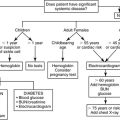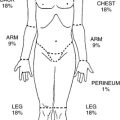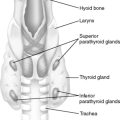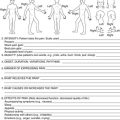CHAPTER 5. Legal Issues
Jan Odom-Forren
OBJECTIVES
At the conclusion of this chapter, the reader will be able to:
1. Identify five common causes of nursing liability.
2. Discuss methods for prevention of a malpractice suit.
3. Describe the four elements of negligence.
4. Discuss phases of litigation that can occur with a malpractice suit.
I. LEGAL CONCEPTS
A. Sources of law
1. Constitutional—system of laws for governance of a nation; may be federal or state
2. Statutory—made by the legislative branch of the government
3. Administrative—laws enacted by administrative agencies charged with implementing particular legislation
4. Judicial—laws made by the courts that interpret legal issues that are in dispute
B. Types of law
1. Common law—derived from principles rather than rules and regulations
2. Civil law—based on rules and regulations
a. Administered through courts as damages or money compensation
b. Most important area is tort law, which involves compensation to those wrongfully injured
3. Criminal law—conduct that is offensive or harmful to society as a whole
4. Substantive law—concerns the wrong, harm, or duty that caused the lawsuit
5. Procedural law—concerns the process and rights of the individual charged with violating substantive law
C. Legal definitions (Box 5-1)
BOX 5-1
LEGAL TERMINOLOGY
Assault
An attempt or threat that causes a person to fear physical touch or injury
Battery
The unauthorized touching of an individual’s body, any extension of it, or anything attached to it in an offensive or injurious manner
Defendant
Person or entity against whom plaintiff’s allegations are made
Expert Witness
A person who serves to educate the court and jury about the subject under consideration, including the appropriate standard of care
Malpractice (Professional Negligence)
A type of negligence that involves a standard of care that can be reasonably expected from professionals (e.g., attorneys, nurses, physicians, accountants); failure to act as a reasonably prudent nurse would act under similar circumstances
Negligence
Deviation from the standard of care that a reasonable person would use in a certain set of circumstances
Plaintiff
The person or party who brings the lawsuit and alleges harm
Standard of Care
The care and judgment exercised by a reasonable, prudent person (nurse) under the same or similar circumstances
D. Negligence law
1. Tort law—a civil wrong that allows the injured party to seek reparation; concerns any action or omission that harms someone
a. Negligence
b. Malpractice
c. Assault and battery
d. Invasion of privacy
e. False imprisonment
f. Defamation
2. Essential elements of professional negligence (malpractice)
a. Duty—once you, as a nurse, undertake the care of a patient, you are under a duty to act in accordance with the standard of care (e.g., you establish a duty to the patient when you take report on a patient in the post anesthesia care unit and accept that patient into your care).
b. Breach of duty—failure to act in accordance with the standard of care
(1) May be an act of omission (e.g., a failure to administer a medication that was ordered)
(2) May be an act of commission (e.g., administration of a medication to which the patient had an allergy)
c. Causation—plaintiff must prove that the breach of duty was the cause of damages (e.g., the administration of the medication to which the patient had an allergy caused an anaphylactic shock, resulting in the patient’s death).
(1) Most difficult element to prove
d. Damages—actual loss or damages must be established (e.g., death, nerve damage, fracture).
e. Plaintiff must prove all four elements of negligence for the cause of action to succeed.
3. Employer liability
a. Respondent superior—“let the master speak”—employer is vicariously liable for negligent acts of employee if the act occurred during an employment relationship and within part of the employee’s job responsibilities.
b. Corporate liability—health care delivery system can be sued when it breaches any direct duty to the patient.
4. Res ipsa loquitur—“the thing speaks for itself”; a rule of evidence that allows a supposition of negligence on the part of the defendant (e.g., permanent loss of neuromuscular control of arm after routine hysterectomy)
a. Defendant must be solely in control at the time injury occurred, and injury would not have occurred if defendant had exercised due care.
b. Plaintiff must have done nothing to contribute to negligence (e.g., foreign object left inside patient after surgery).
5. Intentional torts—intent is necessary, and there must be a willful action against the injured person.
a. Assault—an action that causes apprehension or unwarranted touching (e.g., threatening a patient)
b. Battery—unauthorized touching of one person by another (e.g., lack of consent for treatment)
c. False imprisonment—unjustifiable detention of a person without a legal warrant (e.g., not allowing a patient to go who wants to leave against medical advice)
6. Quasi-intentional torts
a. Invasion of privacy—patient’s right to privacy is recognized.
(1) Using a person’s likeness or name without consent for commercial advantage
(2) Unreasonable intrusion into person’s private affairs
(3) Public disclosure of private facts about a person
(4) Placing a person in a false light in the public’s eye
b. Defamation—wrongful injury to another’s reputation
(1) libel (written form)
(2) slander (spoken form)
7. Standards of care—minimal requirements that define an acceptable level of care
a. May be established by:
(1) State Nurse Practice Act
(2) Federal agency guidelines and regulations
(3) American Nurses Association
(4) American Society of PeriAnesthesia Nurses or other national specialty organization
(5) The Joint Commission or other accrediting bodies, such as Accreditation Association for Ambulatory Health Care
(6) Hospital or ambulatory surgery facility rules and procedures
(7) State Board of Nursing
(8) Common practice
(9) Nursing texts and articles
b. Determined by expert witnesses for judicial system
(1) Essential in professional negligence cases
II. LIABILITY ISSUES
A. Possible causes of nursing liability for the perianesthesia nurse
1. Failure to adequately assess or monitor a patient
a. Nurse must possess competency to assess and/or monitor patient.
b. Assessment and monitoring of patient are actually performed.
c. If assessment and monitoring reveal reportable condition, nurse must notify physician.
d. Nurse must continue to assess and monitor to evaluate effectiveness of intervention.
2. Errors in the use of equipment
3. Errors in medication or treatment
a. Failure to follow seven rights:
(1) Right drug
(2) Right dose
(3) Right patient (two identifiers)
(4) Right route
(5) Right time
(6) Right reason
(7) Right documentation
4. Failure to communicate
a. To another nurse
b. Confirmation of physician orders
c. Changes in patient condition to a physician
5. Patient falls
6. Operating room errors (e.g., sponges/instruments left inside patient)
7. Mix-ups during patient transfers and/or before surgery (e.g., wrong surgery on patient)
8. Failure to report or act on deviations from accepted practice
a. Nurses expected to exercise independent judgment and object when physician’s orders are inappropriate
b. Report facts to manager or otherwise follow chain of command.
9. Failure to follow a physician’s order promptly and accurately
10. Failure to follow institutional or facility procedures
11. Failure to properly teach patient or caregiver accurate and appropriate discharge instructions
a. Should receive discharge instructions before admission or surgery
b. Use preprinted discharge instructions.
c. Give verbal and written instructions.
12. Premature discharge for the ambulatory surgery patient
13. Failure to ensure the presence of an informed caregiver (responsible adult)
14. Failure to assess the ambulatory surgery patient on admission (e.g., nothing by mouth status, any signs or symptoms that might affect reaction to anesthesia or surgery, medication use that day)
B. Prevention of liability
1. Documentation
a. Accurate and comprehensive documentation
b. Purposes of documentation
(1) To communicate the patient’s condition to other health professionals
(2) To assess for improvements that might be needed by risk management and quality management
(3) To obtain data for research
(4) To obtain reimbursement—from the government and insurance
(5) As a legal record
(6) To use as data for quality-of-care review
c. Nurses’ notes first place an attorney will look
(1) Written with time and date and in chronological order
(2) Contains most detailed information regarding the patient
d. Documentation guidelines
(1) Chart accurately.
(a) It is very difficult to prove that something was done if it is not charted.
(b) On the other hand, deliberate inaccuracies can totally destroy defense and expose nurse to criminal charges of fraud.
(2) Chart objectively.
(a) Describe only what you observe.
(b) Do not use words such as “seems,” “apparently,” or “appears.”
(3) Write legibly, and use standard abbreviations adopted by the health care facility.
(4) Do not use the chart to criticize or complain.
(a) Use other appropriate avenues if there is criticism of another nurse.
(5) Do not destroy or obliterate documentation.
(a) Do not use correction fluid or any other kind of eradicator.
(b) Draw one line through the error, initial, and date the line.
(6) Do not leave vacant lines; sign every entry.
(7) Chart as promptly as possible after the care is given.
(8) Correct grammar, spelling, and punctuation make a difference.
(9) Do not chart for someone else or allow someone else to chart for you.
(10) Use appropriate procedure for documenting a late entry.
(11) Document patient and/or family teaching.
(12) Document disposition of any personal belongings.
(13) Document any nursing interventions and patient responses to those interventions.
(14) Document any communication with a physician or supervisor concerning a patient’s condition.
2. Electronic documentation guidelines
a. Protect the user identification code or password given for personal use.
(1) No one else should be given access to that password or document for the user.
b. Only access information and document in chart as authorized to do so.
(1) An attempt to access an electronic chart on a patient without authorization is a breach of confidentiality and privacy.
c. Never ignore electronic reminders that information is coded incorrectly, important data overlooked, or flags for critical information about the patient (e.g., lab work).
(1) Systems alert nurses if a portion of the nursing process is absent.
d. Know the facility procedure for how to handle late entries.
e. Stay updated when changes in documentation format occur.
3. Incident reports
a. Use has changed from punitive measure to a documentation of unusual events.
(1) Should be no fear of reprisal or other negative consequences
(2) Atmosphere of trust and cooperation essential for system to be of best value
b. All actual and potential injuries must be reported.
(1) Should be initiated by the person who observed the event or the first to become aware of the incident
(2) Incorporate patient’s description into the report by use of direct quotes.
c. Documentation should be factual and objective.
(1) Include information regarding patient, description of the incident, any injuries sustained, and outcome of event.
d. Allows risk manager to assess situation and decide on best corrective action
e. Record fact about event in nurses’ notes, but not fact that incident report filed.
4. Telephone calls
a. Document any telephone calls made to report changes in patient condition.
b. Important information to include
(1) Specific time call was made
(2) Who made the call?
(3) Who was called?
(4) To whom information was given
(5) All information given
(6) All information received
c. When obtaining consents (and any other time appropriate), have another witness listen in (total of two witnesses).
5. Personal accountability
a. Know your state Nurse Practice Act.
b. Know the national standards for perianesthesia nursing practice.
c. Continuing education is essential.
(1) Read professional journals and books.
(2) Attend pertinent seminars.
(3) Maintain membership in professional organization pertinent to specialty.
d. Policies and procedures
(1) Will be held accountable for knowing and following hospital or ambulatory facility’s policies and procedures
(2) hould not conflict with one another
(3) Should reflect actual practice
e. Patient relations
(1) Important aspect of prevention of liability
(2) Old adage is true: “Happy patient rarely sues.”
(3) Do not criticize other health care providers in the presence of the family or patient.
(4) Maintain good communication and rapport with the patient and family.
III. LEGAL PROCESS
A. Phases of litigation
1. Evaluation for suit—review of medical record
2. Pleadings
a. Complaint—outlines alleged negligence, states the injury, and may indicate an amount of compensation demanded
(1) Notify insurer and hospital after complaint received.
b. Answer—defendant is allowed a certain period to respond to allegations.
(1) Attorney prepares the answer.
3. Prelitigation panels—required by some states
a. Medical review panel
b. Medical tribunal
c. Arbitration panel
4. If you’ve been sued
a. Do not discuss the case with anyone other than the risk manager or your attorney.
b. Do not talk to the plaintiff, the plaintiff’s attorney, or anyone testifying for the plaintiff.
c. Do not discuss with reporters.
d. Do not alter patient’s chart or hide any information from your attorney.
5. Discovery (pretrial phase)—attempts to narrow issues for trial by gathering and clarifying facts
a. Interrogatories—list of written questions that seeks information to support or refute the complaint
b. Production of documents—may be requested (e.g., ambulatory surgery facility records, incident reports, anesthesia records, policies and procedures, discharge teaching forms)
c. Deposition—oral testimony of any person thought to have information pertaining to the case
(1) Testimony given under oath
(2) Recorded by court reporter
6. Settlement negotiations—may continue throughout process and occur at any time in the process.
7. Trial of lawsuit—may be a judge or jury trial.
a. Jury selection
b. Opening statements by plaintiff and defendant
c. Plaintiff presents case—uses expert witnesses.
d. Defendant presents case—uses expert witnesses.
e. Defense may make motion for directed verdict against plaintiff—argues that the plaintiff has not met the burden of proof.
f. Closing statements by plaintiff and defendant
g. Jury instructions by the judge
h. Jury deliberations
i. Verdict
j. Appeal (optional)
IV. ISSUES OF CONSENT
A. Informed consent
1. Consent obtained after the patient has been fully informed by the physician or dentist about the risks and benefits of the treatment, alternatives, and consequences of no treatment
2. Types of consent
a. Express—given by direct words, either written or oral
b. Implied—inferred by the patient’s conduct or may be legally presumed in emergency situations
3. Treatment without consent
a. Assault and/or battery
b. Negligent failure to obtain consent
4. Exceptions to duty to disclose
a. Some emergency situations—life or well-being of the individual is threatened, and consent cannot be obtained or would result in a delay of treatment.
b. Therapeutic privilege—physician believes information would be harmful to the patient; very restricted.
c. Patient has waived right to consent—does not want to be informed.
d. Lack of decision-making capacity—information must be shared with proxy decision-maker or guardian.
5. Documentation of consents
a. Nurses who sign as witnesses are only witnessing signature of person signing consent form.
b. If patient has additional questions, nurse should refer questions to physician.
c. If physician fails to discuss questions further with the patient, nurse must report that information through the appropriate chain of command.
d. If English is not primary language of patient, an interpreter must be used.
B. Advanced directives
1. Living will—directive from competent individual to medical personnel and family members regarding treatment he or she wishes to receive when he or she can no longer make the decisions himself or herself
2. Natural Death Act
a. State-legislated legally recognized living wills with statutory enforcement
b. Protects practitioner and ensures patient’s wishes are followed
3. Durable power of attorney for health care—allows competent patients to appoint an individual to make health care decisions if they become incompetent to do so
4. Patient Self-Determination Act
a. Passed in 1990 as part of federal Omnibus Budget Reconciliation Act
b. Requires hospitals and other facilities on admission to advise all patients of their rights to refuse treatments and of any relevant state laws dealing with advanced directives
5. Do-not-resuscitate directives—require documentation that the patient’s decision was made after consultation with physician and understanding of options
6. Health Insurance Portability and Accountability Act of 1996
a. Major goal is to ensure proper protection of individuals’ health information.
b. Major purpose is to limit the circumstances in which an individual’s protected health information may be disclosed.
BIBLIOGRAPHY
1. Aiken, T.D.; Catalano, J.T., Legal, ethical, and political issues in nursing. ed 2 ( 2004)Davis, Philadelphia.
2. American Society of PeriAnesthesia Nurses, Standards of perianesthesia nursing practice 2008-2010. ( 2009)American Society of PeriAnesthesia Nurses, Cherry Hill, NJ.
3. Ashley, R.C., How do I know if I have been sued as a nurse and what do I do?Crit Care Nurse 22 (3) ( 2002) 82–83.
4. Ashley, R.C., The anatomy of a lawsuit: Part 1, Crit Care Nurse 22 (4) ( 2002) 68–69.
5. Ashley, R.C., The anatomy of a lawsuit: Part 2, Crit Care Nurse 22 (5) ( 2002) 82–83.
6. Berry, F.A., What to do when sued, Curr Rev Post Anesth Care Nurs 14 (19) ( 2002) 153–160.
7. Brent, N.J., Nurses and the law: A guide to principles and applications. ed 2 ( 2001)WB Saunders, Philadelphia.
8. De Kornfeld, T.J., Medico-legal considerations in the recovery room, Curr Rev Post Anesth Care Nurs 14 (3) ( 1992) 17–24.
10. Feutz-Harter, S., Nursing case law update, J Nurs Law 1 (2) ( 1994) 57–61.
11. Fiesta, J., Failure to assess, Nurs Manage 24 (9) ( 1993) 16–17.
12. Flores, J.A., What if you’re named in a lawsuit?RN 65 (12) ( 2002) 65–68.
13. Guido, G.W., Legal issues in nursing. ed 2 ( 1997)Appleton & Lange, Stamford, CT.
14. Hall, J.K., Nursing: Ethics and law. ( 1996)WB Saunders, Philadelphia.
15. Joel, L.A., The nursing experience: Trends, challenges, and transitions. ed 5 ( 2005)McGraw Hill, New York.
16. Kemmy, J.A., OR nursing law: Legal implications of perioperative documentation, AORN J 57 (4) ( 1993) 954; 956, 968,.
17. Kowalski, K.; Yoder-Wise, P., Rapid reference for nurses. ( 2006)Jones & Bartlett, Sudbury, MA.
18. Litwack, K., Post anesthesia care nursing. ed 2 ( 1995)Mosby, St Louis.
19. Odom, J., Legal issues in perianesthesia nursing, Dissector J Perioper Nurs Coll N Z Nurse Organ 30 (4) ( 2003) 9–11.
20. O’Keefe, J.E., Nursing practice and the law: Avoiding malpractice and other legal risks. ( 2001)Davis, Philadelphia.
21. Springhouse Corporation, Nurse’s handbook of law and ethics. ( 1992)Springhouse, Springhouse, PA.
22. Tammelleo, A.D., Patient sues nurse for failure to obtain consent, Regan Rep Nurs Law 33 (10) ( 1993) 4.
24. White, P.F., Ambulatory anesthesia and surgery. ( 1997)WB Saunders, Philadelphia.
25. Zuffoletto, J.M., OR nursing law: Anatomy of a lawsuit, AORN J 56 (5) ( 1992) 933–936.
26. Zuffoletto, J.M., OR nursing law: Proving causation, damages in malpractice cases, AORN J 58 (3) ( 1993) 589–592.






